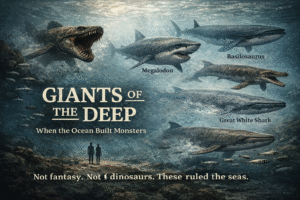Imagine wandering through a damp forest and stumbling upon a bright yellow, web-like structure that looks like something out of a sci-fi movie. This isn’t the work of aliens, but rather a slime mold, a fascinating organism that dwells on our planet. Slime molds are one of nature’s most intriguing mysteries, exhibiting surprising levels of intelligence and adaptability without a brain. These organisms can solve complex problems, change shapes, and even seem to learn from past experiences. Let’s dive into the secret world of slime molds and discover why these creatures are anything but simple.
Understanding Slime Molds
Definition and Classification
Slime molds defy easy classification. While they are often lumped in with fungi, slime molds are more closely related to amoebas—single-celled organisms capable of changing shape. Among the most well-known is Physarum polycephalum, a bright yellow slime mold that has become a favorite subject in scientific studies due to its unique behaviors.
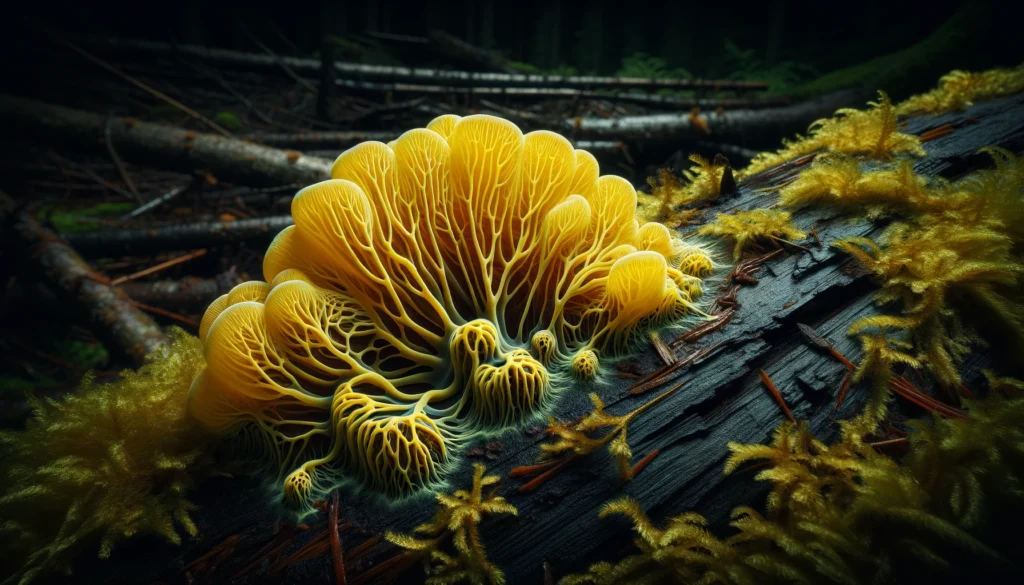
Habitat and Survival
Slime molds are found worldwide, thriving in moist, shady environments like leaf litter and decaying wood in forests. They begin their life cycle as amoeba-like cells, eating bacteria, spores, and other microbes. When food is scarce, they morph into a larger organism that can move and even navigate to optimize their survival.
Physical Appearance and Characteristics
Physically, slime molds can be astonishing. They might appear as slimy networks of yellow veins, gelatinous blobs, or even powdery crusts depending on their type and environmental conditions. Their amorphous, changing shapes are key to their adaptability, allowing them to flow across varied terrains as they search for food.
The Intelligence of Slime Molds
Problem-Solving and Navigation Skills of Slime Molds: The Tokyo Subway Example
Slime molds, specifically Physarum polycephalum, have demonstrated astonishing problem-solving capabilities that challenge our conventional notions of intelligence and decision-making. A particularly compelling illustration of this is the experiment involving the Tokyo subway system, which not only highlights their ability to navigate and optimize routes but also their potential utility in solving complex human-engineered problems.
The Experiment Setup
In 2010, researchers Atsushi Tero, Seiji Takagi, and their colleagues set out to explore the network optimization capabilities of Physarum polycephalum. They replicated the layout of the Tokyo subway system, one of the most complex transit networks in the world, on a flat surface. The city’s stations were represented by oat flakes, which are attractive food sources for the slime mold. The challenge for the slime mold was to connect these flakes (stations) in an efficient manner, mimicking the actual rail system connecting various points in Tokyo.
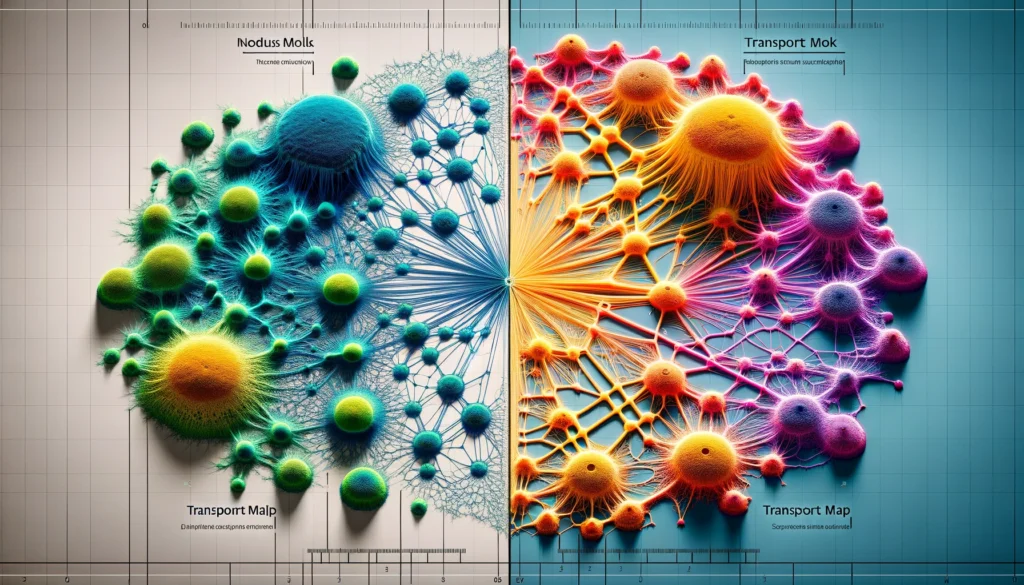
Slime Mold’s Response
Upon introducing the slime mold to this setup, it began by spreading out thin tendrils in multiple directions from a central starting point. Over the course of several hours, the slime mold extended and retracted these tendrils, exploring different pathways to the scattered oat flakes. Gradually, it refined its network. The mold discarded less efficient routes and reinforced the ones that allowed for the most direct and resource-efficient paths between the flakes.
What astonished observers was the striking similarity between the slime mold’s creation and Tokyo’s actual rail system. The mold had effectively formed a network that closely resembled the efficient layout of the subway, including replicating major routes and hubs.
Implications of the Findings
This experiment has profound implications. First, it demonstrates that Physarum polycephalum can solve complex spatial problems efficiently, using a form of biological computation. The organism assesses possible routes and optimizes them for resources and efficiency, despite having no central brain or indeed any nervous system.
Second, the behavior of the slime mold in this experiment suggests a form of primitive intelligence and memory. The mold uses a feedback mechanism based on the flow of nutrients and cellular signaling to determine the quality of paths. Efficient paths are thickened and inefficient ones are abandoned, indicating a form of spatial memory and learning.
Applications and Insights
The findings from this experiment offer insights into designing more efficient transport networks. By mimicking the adaptive and decentralized decision-making processes of the slime mold, engineers and urban planners might improve how they design roads and railways to reduce costs and increase connectivity. Moreover, the experiment underscores the potential of bio-inspired solutions to engineering problems, showing how natural processes can parallel and even inspire human endeavors in network design.
In conclusion, the Tokyo subway experiment with slime mold not only provides a vivid example of the unexpected capabilities of these fascinating organisms but also offers a lens through which we can reevaluate the boundaries of intelligence and the potential for interdisciplinary applications between biology and technology.
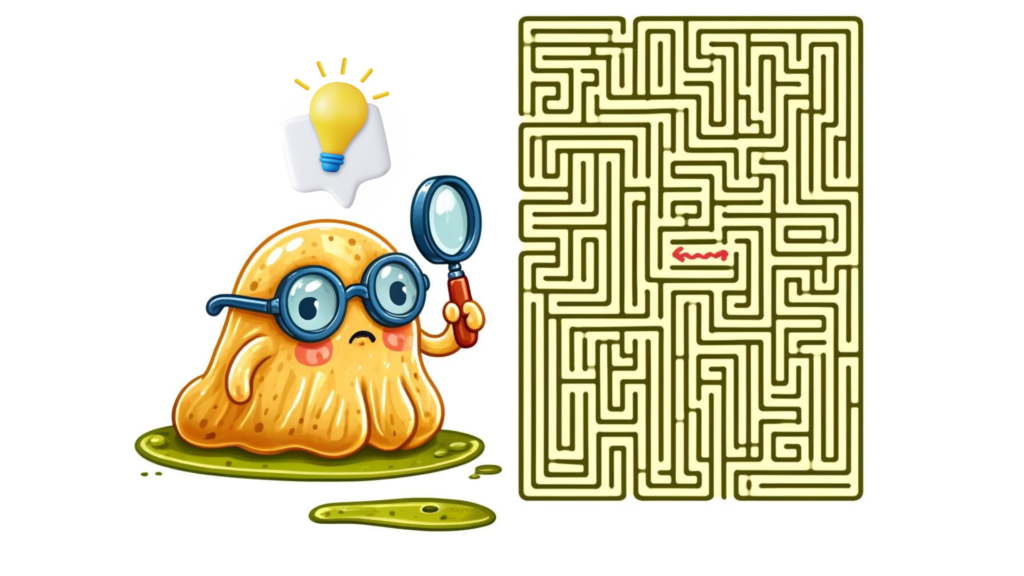
Ecological Impact and Benefits
Role in Ecosystems
Ecologically, slime molds play a crucial role in breaking down dead organic matter, and recycling nutrients vital for forest ecosystems. They act almost like tiny decomposers, cleaning up the forest floor and enabling other forms of life to flourish.
Benefits to Humans and Science
The unique characteristics of slime molds have inspired advancements in various fields. For instance, their ability to solve complex networks is being studied for applications in optimizing transportation and logistics networks. Moreover, the simplicity of their structure and behavior offers valuable insights into the workings of other more complex biological and artificial systems.
Cultural and Historical Significance
Historical Use and Perception
Historically, slime molds have been both revered and reviled. In some cultures, they were used medicinally, while in others, they were considered bad omens or pests. Today, as we understand more about their capabilities and ecological importance, the perception of slime molds has shifted more towards fascination and appreciation.
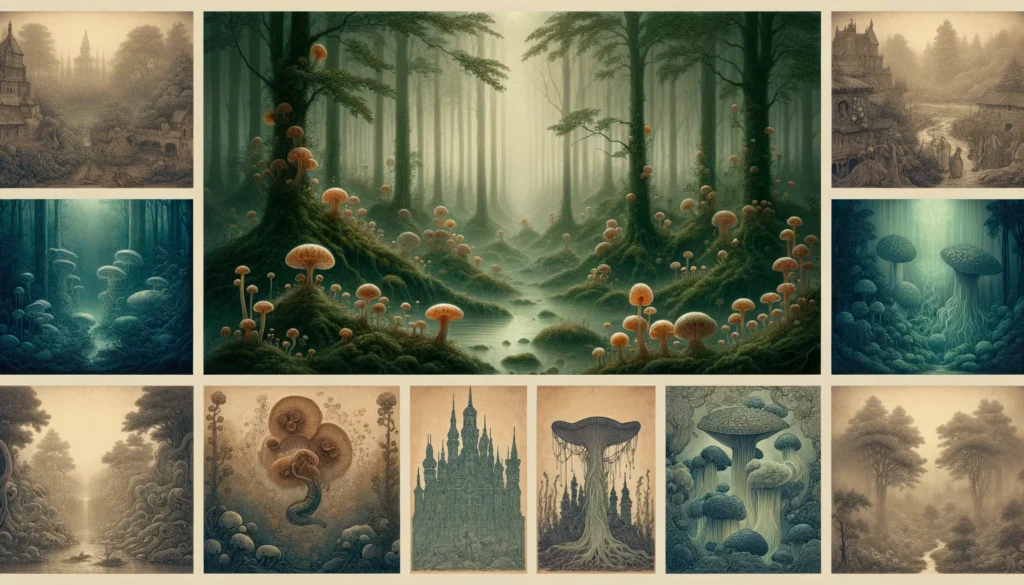
Slime Molds in Popular Media
Slime molds might not headline blockbuster movies or feature prominently in bestselling novels, but their peculiar characteristics and surprising intelligence have captured the attention of media and popular culture in various intriguing ways. Here are a few notable examples where slime molds have made their mark:
Documentaries and Educational Programs
Slime molds have been the stars of several documentaries and educational shows that highlight their unique abilities and roles in nature. One of the most prominent is the documentary “The Creeping Garden“ which intricately explores the world of slime molds, presenting them as complex, intelligent organisms. This film combines scientific research with artistic expression, making slime molds accessible and fascinating to a broad audience.
Literature
In literature, slime molds often appear as metaphors for interconnected systems and collective intelligence. A notable example is in Jeff VanderMeer’s science fiction novel “Annihilation”, where a mysterious area known as Area X is influenced by a potentially alien presence that exhibits characteristics reminiscent of slime molds, such as distributed consciousness and strange biological anomalies.
Art Installations
Artists have also drawn inspiration from slime molds, using their growth patterns and behaviors to create dynamic and interactive art installations. Artist Heather Barnett uses living slime mold to create artworks that explore biological intelligence and network theory. Her project, “The Physarum Experiments,” showcases how slime molds can be used to explore biological computing, creating a bridge between nature and technology.
Educational Content on Social Media
On platforms like YouTube and Instagram, educators and science communicators use slime molds to teach concepts of biology, problem-solving, and network theory. Channels like Journey to the Microcosmos feature close-up videos of slime molds growing and navigating mazes, helping viewers appreciate these organisms’ subtle complexities.

Conclusion
Slime molds, with their surprising intelligence and ecological importance, are more than just a curiosity of nature—they are a testament to the complexity and adaptability of life. As we delve deeper into understanding these remarkable organisms, we may find more than just biological insights; we might discover new ways to design our technologies and manage our environments. Let’s keep our minds open to the lessons these extraordinary organisms have to offer. Who knows what secrets slime molds might reveal next?
Author’s Note
Thank you for joining me on this fascinating journey into the world of slime molds. These extraordinary organisms challenge our understanding of intelligence and problem-solving. I hope this blog sparks your curiosity and deepens your appreciation for nature’s complexities. As we explore the capabilities of slime molds, we uncover potential applications that could inspire future technological advancements. Enjoy diving deeper into this intriguing topic through the recommended books and sources below.
G.C., Ecosociosphere contributor.
References and Further Reading
- “The Amoeba in the Room: Lives of the Microbes” by Nicholas P. Money – A book that offers insight into the lives of microbes, including slime molds, highlighting their importance in life on Earth.
- “Emergence: The Connected Lives of Ants, Brains, Cities, and Software” by Steven Johnson – While not exclusively about slime molds, this book explores the concept of emergence through various systems in nature, which is relevant to understanding how slime molds operate and adapt.



